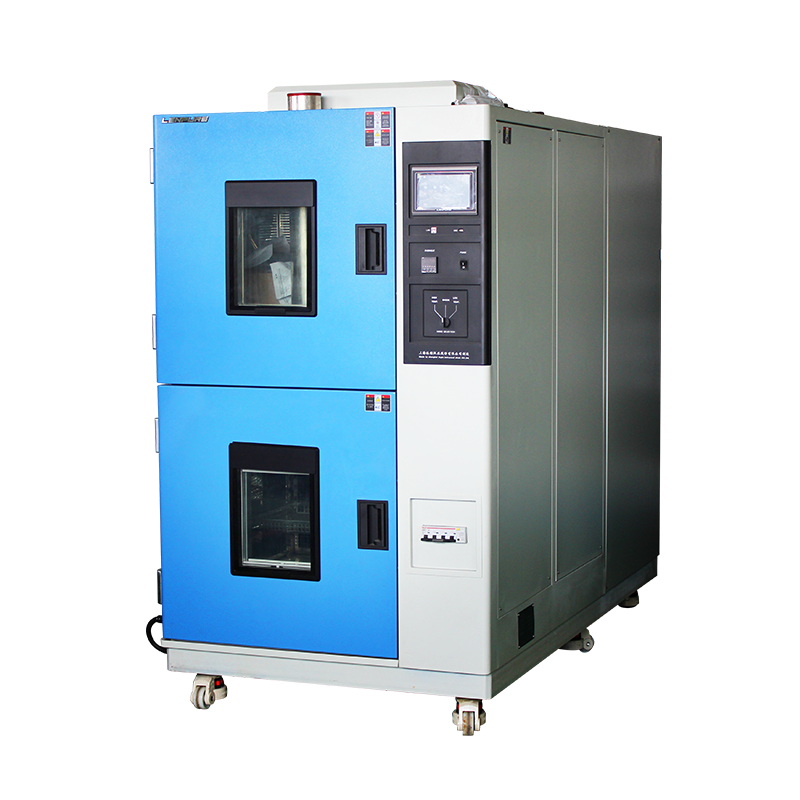

Frost formation in a thermal shock test chamber is a sublimation phenomenon where moisture inside the chamber condenses under low-temperature conditions. But why does this happen? Is it simply because the chamber temperature is too low?
In a thermal shock test chamber, airflow and moisture are channeled through specific pathways. During operation, the sealed environment of the chamber creates a closed-loop system. When simulating extreme temperature conditions, fluctuations in temperature and humidity cause water vapor to condense and freeze, leading to frost or crystallization.
However, prolonged frost accumulation can have adverse effects:
Increased load on the refrigeration compressor, significantly reducing cooling efficiency.
Compromised test reliability due to unstable temperature control.
Therefore, timely defrosting is essential once frost is detected.

Defrosting Methods
Many modern test chambers are equipped with automatic defrosting systems, which typically follow this process:
The low-temperature compartment initiates defrosting.
An electromagnetic valve redirects high-temperature, high-pressure gas from the compressor’s exhaust to the refrigeration evaporator.
The evaporator absorbs heat, raising its surface temperature to melt frost into water.
The water is drained through a dedicated channel, completing the defrosting cycle.
Best Practices to Minimize Frost
Limit door openings during operation, as frequent access introduces external moisture and accelerates frost buildup.
Regular maintenance helps sustain optimal performance.
While defrosting is a routine task that users can manage by troubleshooting, technical issues should be promptly addressed by contacting the manufacturer’s after-sales support.
Key Takeaway:
Understanding frost causes and defrosting mechanisms ensures long-term chamber efficiency and accurate test results. For operational challenges, always consult professional support.